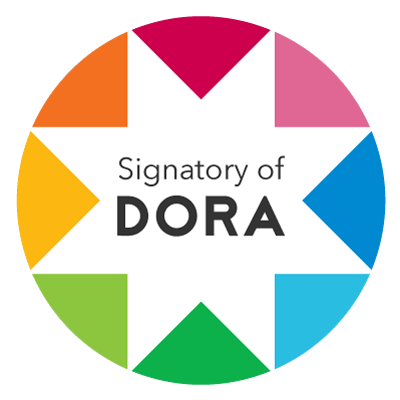Author Guidelines
Submitting Your Manuscript to JGER
Journal of Global Education and Research receives all manuscript submissions electronically via their website located at: http://scholarcommons.usf.edu/jger/. This tool allows for rapid submission of original and revised manuscripts, as well as facilitating the review process and internal communication between authors, editors and reviewers via a web-based platform.
The Journal of Global Education and Research is an is an open-access, double blind, peer reviewed journal. It does not cost any money to submit or access published articles. It is a free service provided by the University of South Florida M3 Center.
All manuscripts must be the original work not yet submitted to any other journals or publications. Each manuscript must be accompanied by a statement that it has not been published elsewhere and that it has not been submitted simultaneously for publication elsewhere.
As a general rule, Journal of Global Education and Research does not except a manuscript that contains more than 20% similarity index. In addition, each source should not be cited more than 2%. To verify the originality of content submitted to our journals, we use Turnitin to check submissions against previous publications.
Authors are allowed to hold the copyright without restrictions; however, they must agree to the following when submitting a manuscript for consideration:
I hereby grant to the USF Tampa Library and the journal publisher the nonexclusive, royalty-free right to distribute, display, and archive this work in a digital and/or print format for non-commercial educational and research uses during the full term of copyright. I warrant that I have the copyright to make this grant to the USF Tampa Library and the journal publisher unencumbered and complete. Authors are responsible for obtaining permission to reproduce copyrighted material from other sources.
Following publication, the author’s rights will be protected under a Creative Commons Attribution-NonCommercial 4.0 International.
Formatting Requirements
Journal of Global Education and Research has NO general rules about the formatting of articles upon initial submission. There are, however, rules governing the formatting of the final submission.
Please see the following pages and documents for the minor/major revisions and final preparation for your manuscript.
Although bepress can provide limited technical support, it is ultimately the responsibility of the author to produce an electronic version of the article as a Microsoft Word file that can be converted to a PDF file.
Editorial Processing
There are six steps for the Journal of Global Education and Research Review Process:
a) After receiving a manuscript, the editorial team checks the paper’s composition and arrangement against the journal’s "Author Guidelines" to make sure it includes the required sections and stylizations. For the double-blind peer review process, the team make sure that the manuscript blinded and do not include and identification information such as author(s) name, affiliation, acknowledgement, project or fund number etc. To make sure that ensure that the file’s “Properties” are also anonymized, all word documents were converted to pdf to prevent any hidden author information. The quality of the paper is not assessed at this point.
b) After the initial check, the manuscript is sent to Subject Area Editors who are expert in their field. The Subject Area Editors double checks that the manuscript is appropriate for the journal and is sufficiently original and interesting. If not, the paper may be desk rejected without being reviewed any further.
c) After this screening, Subject Area Editors send invitations to individuals they believe would be appropriate reviewers from the journal master reviewers list.
Master reviewers list is a database which includes all the reviewers and their information such as their affiliation and keywords related to their specific research areas. While selecting reviewers, Subject Area Editors pay attention to not to match affiliations of the author(s) and reviewers. Also, reviewers were selected from different countries to have a global perspective. Subject Area Editors carefully select reviewers who have enough subject matter expertise to do justice to the manuscript. Potential reviewers consider the invitation against their own expertise, conflicts of interest and availability. They then accept or decline. As responses are received, further invitations are issued or reminder emails are sent, if necessary until the required number (3) of commitments is obtained.
d) After reviewers accept to review, they then complete the review and provide recommendations and comments to Subject Area Editors and author(s) within a time limit (3-4 weeks). It was assumed that reviewers read the paper several times as its nature requires. Reviewers build a detailed point-by-point review. The review is then submitted to the journal, with a recommendation to accept or reject it – or else with a request for revision (marked either major or minor) before it is reconsidered. If the reviews differ widely, the editor may invite an additional reviewer so as to get an extra opinion before making a decision. Continuation of the process scheduling includes; making a decision to accept the submission, ask the author(s) for a revision or reject the submission by the Subject Area Editors.
e) Subject Area Editors send a decision email to the author(s) including any relevant anonymized reviewer comments. At this point, reviewers are sent an email letting them know the outcome of their review. All accepted papers go through at least one or two revisions.
f) If accepted, the paper is sent to production. If rejected, Subject Area Editors base rejections on negative recommendations in the double-blind peer review process and author(s) receive comments from the editors that describe some of the weaknesses of their submission. Ideally, the author(s) consider these constructive comments and revise the paper before they send it to another journal. If the manuscript sent back for a major revision, the author(s) are expected to revise the manuscript and prepare a revision report to each reviewer. In this report, the author(s) are expected to address each reviewers’ comments and attached reviewers report to resubmission file. Subject Area Editors check the resubmitted manuscript to make sure that revision was completed; reviewers’ comments were addressed; reviewers reports were attached, and the resubmitted file was blinded for the next round of review. After a successful screening, the resubmitted manuscript is sent to the reviewers. The process continues until an acceptance or rejection decision. If the manuscript sent back for a minor revision, they might be handled by Subject Area Editors. The final version of the manuscript is read by the editor before it is sent to publication.
Please visit Publication Ethics & Malpractice Statement for more details!


